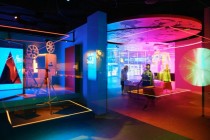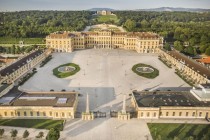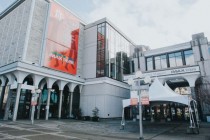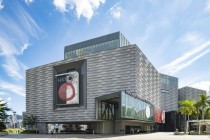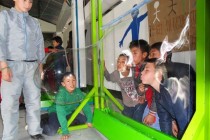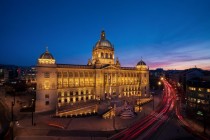| Algeria |
Algiers |
National Museum of Modern and Contemporary Art of Algiers |
239. |
402 |
|
|
Modern and contemporary... art and design
|
More |
The National Museum of Modern and Contemporary Art of Algiers (MaMa) was opened in 2007.
MaMa collects works of art in the field of painting, sculpture, graphics, photography, video, new media, industrial design from 1905 to the present day.
|
| Argentina |
Buenos Aires |
Museum of Latin American Art of Buenos Aires |
102. |
337 |
|
|
Art
|
More |
Museum of Latin American Art of Buenos Aires (MALBA) established in 2001.
It collects and shares Latin American art from the beginning of the 20th century to the present day. The collection has paintings, e.g. Kahlo, Rivera, Lam.
|
| Argentina |
Buenos Aires |
Museo Nacional de Bellas Artes |
166. |
302 |
|
|
Art
|
More |
The Museo Nacional de Bellas Artes was inaugurated in 1896.
The MNBA collection includes pre-Columbian, colonial, Argentinean and international art, from the 3rd century BC to the present day.
The MNBA's collections include works by, among others: El Greco, Francisco de Goya, Édouard Manet, Claude Monet, Edgar Degas, Pierre-Auguste Renoir, Vincent van Gogh, Paul Gauguin, Pablo Picasso, Amedeo Modigliani, Marc Chagall, Vassily Kandinsky, Paul Klee, Jackson Pollock, Mark Rothko, and Henry Moore.
Argentine art is represented, for example, by: Antonio Berni, Marta Minujín and León Ferrari, and Latin American art, for example, by: Joaquín Torres García, Diego Rivera and Jesús Rafael Soto.
The total number of exhibits in the collection is over 12,000.
The exhibition area covers 4,610 square meters.
|
| Argentina |
Buenos Aires |
National Historical Museum |
397. |
292 |
|
|
National - history
|
More |
National Historical Museum (Museo Histórico Nacional) was established in 1889. It officially opened to the public in 1891.
The National Historical Museum houses a vast collection of artifacts that chronicle Argentina’s history, focusing primarily on the country's struggle for independence and the 19th century. Key highlights of its collections include:
1. Historical Artifacts and Memorabilia
- Weapons: Swords, sabers, and guns used during the independence wars.
- Flags and Banners: National flags, including those used by revolutionary armies.
- Military Uniforms: Uniforms of key figures like General José de San Martín and other military leaders.
2. Personal Belongings of National Heroes
- Items that belonged to José de San Martín, Manuel Belgrano, and Juan Manuel de Rosas, among others.
- San Martín's saber: One of the museum’s most treasured items.
3. Documents and Manuscripts
- Original letters, decrees, and proclamations from the independence era.
- Treaties and correspondence between revolutionary leaders.
4. Fine Art Collection
- Paintings depicting significant moments in Argentine history, such as battles and revolutionary events.
- Works by renowned Argentine artists like Cándido López, who documented the Paraguayan War (War of the Triple Alliance) through his paintings.
5. Furniture and Everyday Items
- 19th-century furniture from notable homes and public buildings.
- Items showcasing daily life during Argentina’s formative years.
6. Religious and Cultural Artifacts
- Religious items, including crosses and church relics, reflecting the role of the Catholic Church in Argentina’s history.
7. Numismatics and Medals
- Coins, medals, and currency from Argentina’s early years as a nation.
8. Archaeological Artifacts
- Pre-Columbian artifacts from various indigenous cultures, offering insight into Argentina’s history before colonization.
The National Historical Museum has a collection of approximately 50,000 artifacts, about 4,000 artifacts are on display.
The museum complex, including its gardens and exhibition spaces, covers approximately 4,000 square meters. The exhibition area itself is around 1,600 square meters.
|
| Argentina |
La Plata |
La Plata Museum |
328. |
265 |
|
|
University – natural... history, anthropology
|
More |
La Plata Museum (Museo de La Plata) opened to the public in 1888.
The museum is divided into five sections: anthropological, botanical, geological, palaeontological and zoological, which at permanent exhibitions form a single whole depicting the evolution of nature, from the creation of the universe and our planet to the origin of man and its culture.
La Plata Museum has, among other things, a collection of large mammal fossils from the third and fourth period of the Cenozoic era, pre-Columbian ceramics, objects from the excavations in the Aksha complex (Egypt, near the 1st cataract, 13th century BC).
All collections amount to nearly 4 million objects.
|
| Argentina |
Salta |
Museo de Arqueologia de Alta Montana |
350. |
421 |
|
|
Archeology
|
More |
Museo de Arqueologia de Alta Montana (MAAM) opened in 2004.
MAAM presents an archaeological find discovered on the peaks of the Llullaillaco volcano (6,700 meters above sea level) that dates back over 500 years ago. These are the 3 bodies of the Inca children, the heroes of the Capocha ceremony during which they were sacrificed to act as intermediaries between the people and the gods.
The museum area is 1,507 square meters.
|
| Australia |
Adelaide |
Art Gallery of South Australia |
368. |
201 |
|
|
Art
|
More |
The Art Gallery of South Australia (AGSA) was established in June 1881 as the National Gallery of South Australia. It officially opened to the public that same year.
The Art Gallery of South Australia holds one of the most significant art collections in Australia, with more than 47,000 works spanning a wide range of cultures, styles, and periods. Its collection highlights include:
1. Australian Art
- Colonial to Contemporary: Paintings, sculpture, photography, and decorative arts from the early colonial period to contemporary works.
- Indigenous Art: One of the most comprehensive collections of Aboriginal and Torres Strait Islander art, including bark paintings, dot paintings, sculpture, and contemporary Indigenous works.
2. European Art
- Works from the Renaissance to the present day.
- Key holdings include 19th-century British art, Victorian painting, and modernist European works.
3. Asian Art
- Rich holdings from East Asia, South Asia, and Southeast Asia, including:
• Chinese ceramics and jades.
• Japanese prints and textiles.
• Indian sculpture and miniature paintings.
4. Decorative Arts and Design
- Extensive collection of decorative arts including ceramics, glass, furniture, metalwork, and textiles.
- Includes Australian, European, and Asian design, from historical craftsmanship to modern design movements.
5. Contemporary Art
- Strong focus on Australian contemporary art and international contemporary artists.
- Includes installations, digital media, performance art, and cutting-edge visual works.
6. Photography and Prints
- Significant holdings of Australian and international photography and prints.
- Includes historical photographs, modernist works, and contemporary art photography.
|
| Australia |
Brisbane |
Queensland Art Gallery & Gallery of Modern Art |
65. |
703 |
|
|
Art
|
More |
Queensland Art Gallery & Gallery of Modern Art (QAGOMA) have been working together since 2006. In total, they cover an area of nearly 30,000 square meters. They present contemporary art of Australia, Asia and the Pacific. Their collections include works by others: Pablo Picasso, Willem de Kooning, Nam June Paik, Cindy Sherman, and James Turrell. QAGOMA includes the Children's Art Center.
|
| Australia |
Canberra |
National Museum of Australia |
228. |
237 |
|
|
National - history
|
More |
The National Museum of Australia was established in 1980.
The National Historical Collection, which is the core of the museum's collection, includes more than 210,000 items illustrating the history and cultural heritage of Australia. The museum has the world's largest collection of Aboriginal bark paintings and stone tools. In the museum you can see, among others: navigation instruments used by Captain James Cook and Holey Dollar, the first currency minted in Australia.
|
| Australia |
Canberra |
National Gallery of Australia |
279. |
498 |
|
|
National - art
|
More |
National Gallery of Australia (NGA) founded in 1967, opened to the public in 1982.
Some NGA collections:
- Australian Aboriginal and Torres Strait Islander art (the largest in the world)
- Australian art (non-Indigenous), works by e.g. Sidney Nolan, Grace Cossington Smith, Margaret Preston, Arthur Boyd, Tom Roberts, Frederick McCubbin
- Western art, works by e.g. Paul Cézanne, Pablo Picasso, Mark Rothko, David Hockney
- Pacific art
- Asian art
- Sculpture garden, works by e.g. Auguste Rodin, Henry Moore
The NGA has over 155,000 works of art.
The NGA building has 23,000 square meters of floor space.
|
| Australia |
Canberra |
National Portrait Gallery |
313. |
344 |
|
|
Art
|
More |
The National Portrait Gallery has been operating as an unassisted institution since 1998.
The national collection of portraits includes about 3,000 photographs, paintings, sculptures, drawings and multimedia.
|
| Australia |
Canberra |
Australian War Memorial |
315. |
405 |
|
|
Memorial, history,... military
|
More |
The Australian War Memorial opened in 1941.
The Australian War Memorial combines a sanctuary including the Memorial Hall with the Tomb of the Unknown Australian Soldier, a national military museum, and a Research Center. The Memorial also has an open-air sculpture garden.
It commemorates the victims of those Australians who died in the wars and expresses gratitude for the sacrifice of Australian soldiers.
It covers 14 hectares.
|
| Australia |
Melbourne |
National Gallery of Victoria |
42. |
1741 |
|
|
National - art
|
More |
The National Gallery of Victoria was founded in 1861.
It consists of two sections: the NGV International art gallery and the NGV Australia art gallery.
At NGV International you can see the works of such masters as Rembrandt, Titian, and Manet.
Whereas NGV Australia presents the art of Aborigines and Australian painters representing different periods, from classic colonial painters, through Australian Impressionists to contemporary artists.
|
| Australia |
Melbourne |
Australian Center for the Moving Image |
105. |
262 |
|
|
Cinema, media, art
|
More |
Australian Center for the Moving Image founded in 2002.
ACMI is a museum of digital culture, film, video games and art.
ACMI's centrepiece exhibition The Story of the Moving, photo Gareth Sobey
|
| Australia |
Melbourne |
Museums Victoria |
178. |
163 |
|
|
Natural history,... cultural history, science and technology
|
More |
Museums Victoria (MV) founded in 1854.
The MV includes, among others: Melbourne Museum, Immigration Museum, Scienceworks, Royal Exhibition Building, Bunjilaka Aboriginal Cultural Center. The MV collection includes, among others, paleontology, zoology, artifacts of traditional indigenous cultures of Australia and the Pacific. The entire collection is over 17 million exhibits.
|
| Australia |
Sydney |
Museum of Contemporary Art Australia |
192. |
792 |
|
|
Art
|
More |
Museum of Contemporary Art Australia (MCA) established 1991.
It collects contemporary art from Australia (has over 4,500 works by Australian artists) and around the world.
|
| Australia |
Sydney |
Art Gallery of New South Wales |
273. |
1151 |
|
|
Art
|
More |
Opened in 1874, the Art Gallery of New South Wales presents Aboriginal and Torres Strait Islander art, Australian, Asian, Pacific and European.
|
| Austria |
Salzburg |
Salzburg Burgen & Schlösser Betriebsführung |
280. |
340 |
|
|
Historic house
|
More |
Salzburg Burgen & Schlösser Betriebsführung (SBSB) - the Salzburger Burgen & Schlösser Management is a company-like institution of the Office of the Salzburg Provincial Government. SBSB started its operations in 1993. It consists of:
- Fortress Hohensalzburg, one of the largest existing castles in Europe from the 11th century, consisting of fifty buildings with a total area of 33,000 square meters; it houses: Prince's Chambers & Magic Theater, Armory, Panorama Tour, Castle Museum (a branch of Salzburg Museum), Rainer Regimental Museum, Puppet Museum.
- Hohenwerfen Castle; it houses the following exhibitions: The Legend of Jackl - Wizards and Witches in Salzburg, Exhibition of the film "Where Eagles Dare".
- Mauterndorf Castle; it houses the Lungau Country Museum
- Salzburg "Residence" Palace
|
| Austria |
Vienna |
Belvedere |
56. |
677 |
|
|
Art
|
More |
The collection of paintings stored at Belvedere was made publicly available in 1781. Currently, art collections are presented in Lower Belvedere, Upper Belvedere and Belvedere 21. They cover works of art from the Middle Ages to the present day. The attention of visitors is attracted by the world's largest collection of Gustav Klimt's paintings.
Belvedere Palace © Lukas Schaller / Belvedere, Vienna
|
| Austria |
Vienna |
Schönbrunn Palace |
89. |
824 |
|
|
Historic house
|
More |
Schönbrunn Palace was the main summer residence of the Habsburg rulers. The palace was built in the 17th century, rebuilt in 1740–50 during the reign of Empress Maria Teresa in the Rococo style. The museum in the palace was opened to the public in 1919. There are 1441 chambers in the palace, of which 45 are open to the public. It covers an area of about 186 hectares.
Schönbrunn Palace © Schloss Schönbrunn Kultur- und Betriebsges.m.b.H., Severin Wurnig
|
| Austria |
Vienna |
Kunsthistorisches Museum |
97. |
352 |
|
|
Art
|
More |
Kunsthistorisches Museum (KHM) opened in 1891.
Most of the collections are the collections of the imperial Habsburg family. The collections are divided into a gallery of paintings, art of ancient Egypt, Antikensammlung, Kunstkammer, Münzkabinett, and a library. KHM presents paintings for example: Raphael, Dürer, Titian, Caravaggio, Rubens, Rembrandt, Velázquez.
©KHM-Museumsverband
|
| Austria |
Vienna |
St. Stephen's Cathedral |
209. |
237 |
|
|
Temple
|
More |
St. Stephen's Cathedral (Domkirche St. Stephan) is the third temple erected on the same site from 1137 to 1511. The Gothic cathedral with older Romanesque elements is built of limestone.
Length 107 meters, width 70 meters, height 136.7 meters.
Inside, numerous altars are stored, including the Baroque main altar and the Gothic Wiener Neustadt Altar, the Gothic tomb of Emperor Frederick III, and the late-Gothic sandstone pulpit.
|
| Austria |
Vienna |
Natural History Museum Vienna |
300. |
262 |
|
|
Natural history
|
More |
The Natural History Museum (Naturhistorisches Museum Wien, NHM) opened to the public in 1889.
The entire collection consists of about 30 million objects. Of which over 100,000 objects are on display in 39 rooms with an area of 8,460 square meters.
The collection includes, among others:
- the Venus of Willendorf, about 29,500 years old
- a sea mermaid that became extinct more than 200 years ago
- dinosaur skeletons such as diplodocus, allosaurus and iguanodon
- complete skeletons of large mammals, such as Deinotherium (hoe tusker)
- the largest and oldest meteorite collection in the world, with the Martian meteorite "Tissint"
© NHM Vienna, Kurt Kracher
|
| Austria |
Vienna |
Albertina |
303. |
382 |
|
|
Art
|
More |
Albertina established in 1805.
Its collections include about 65,000 drawings and about 1 million graphics and photographs, including works by Dürer, Rembrandt, Rafael, Schiele, Cézanne, Picasso, Matisse, Klimt, and Kokoschka. Albertina Modern has been open to the public since 2020, bringing together over 60,000 works by 5,000 artists.
|
| Austria |
Vienna |
Jewish Museum Vienna |
382. |
232 |
|
|
Culture History
|
More |
The Jewish Museum of the City of Vienna is a place of encounter, interaction and understanding, which seeks to raise awareness of Jewish history, religion, and culture.
The first Jewish museum in the world was founded in Vienna in 1895, sponsored by a group of Viennese Jewish citizens. The collection focused on the culture and history of the Jews in the Austro-Hungarian Empire, particularly Vienna and Galicia.
In the interwar years Zionist objects were added, reflecting the new political discussion at that time.
The museum was closed by the Nazis in 1938 directly after the Anschluss. In the last year of its existence the inventory listed 6,474 objects. In 1939 the museum collection was transferred to the Museum of Ethnology and other institutions in Vienna. The Anthropology Department of the Natural History Museum in Vienna used some of the items for its anti-Semitic propaganda exhibition “The physical and psychological appearance of the Jews".
Most of the objects were returned to the IKG Vienna in the early 1950s, although some were not restituted until the 1990s. Over half of the objects have disappeared; it is practically impossible to discover whether they were stolen or deliberately destroyed. Objects once listed in the Jewish Museum collection turn up occasionally on the art and antiques market. The surviving objects – on permanent loan from the IKG to the present-day Jewish Museum Vienna – form a unique component of the current collection.
|
| Bangladesh |
Dhaka |
Bangladesh National Museum |
339. |
382 |
|
|
History, art, archeology,... natural history, ethnology
|
More |
The historical origins of the Bangladesh National Museum is the Dacca Museum established in 1913. The Bangladesh National Museum was formally inaugurated in 1983.
The exhibitions are arranged chronologically from prehistory to the present day. The collection of gold, silver and copper coins from various periods of Bangladesh and Indian history is notable. The museum has one of the largest collections of armor and weapons in the Indian subcontinent. He is in possession of a large collection of paintings by Shilpacharya Zainul Abedin (1914-1976). One of the permanent exhibitions presents all phases of the Bengalis' struggle for political freedom, economic emancipation and cultural identity in the years 1757-1971.
The Bangladesh National Museum occupies a building with a total area of nearly 18,800 square meters.
|
| Belgium |
Antwerp |
Middelheim Museum |
346. |
195 |
|
|
Modern and contemporary... art
|
More |
The Middelheim Museum (Middelheimmuseum) was opened in 1951 as the open-air sculpture museum. Then, for the needs of the museum, buildings were built successively: the Braem Pavilion, depot in Middelheim-Hoog, and the Het Huis pavilion (The house). The Middelheim museum has a branch called Art in the City active in all districts of Antwerp.
The collection consists of about 400 works of art. including works by artists such as Auguste Rodin, Constantin Meunier, Émile-Antoine Bourdelle, Aristide Maillol, Arturo Martini, Hans Arp, Ossip Zadkine, Barbara Hepworth, Henry Moore, Alexander Calder.
The Middelheim Museum covers an area of 27 hectares.
|
| Belgium |
Brussels |
Royal Museums of Fine Arts of Belgium |
212. |
302 |
|
|
Art
|
More |
Royal Museums of Fine Arts of Belgium founded in 1803.
It consists of the Oldmasters Museum, Modern Museum, Magritte Museum, Fin-de-Siècle Museum, Meunier Museum, Wiertz Museum. It has 20,000 paintings, sculptures and drawings that date from the beginning of the 15th century to the present day. The collected works of art are by, among others: Pieter Bruegel, Peter Paul Rubens, Jacques Jordaens, Paul Gauguin, Vincent van Gogh, Salvador Dalí, Paul Delvaux, René Magritte, Henry Moore.
|
| Belgium |
Brussels |
Bozar |
285. |
174 |
|
|
Art
|
More |
The Center for Fine Arts, opened in 1928, has been using the name BOZAR since 2002.
It includes exhibition and conference rooms, a cinema and a concert hall. In total, it covers an area of 33,000 square meters.
BOZAR organizes up to 10 exhibitions per year.
|
| Belgium |
Jette |
„Brussels Museums” |
415. |
35 |
|
|
Communal
|
More |
The contr. director is Bérengère de L.
|
| Belgium |
Tervuren |
Royal Museum for Central Africa |
405. |
163 |
|
|
Ethnography, natural... history, history, art
|
More |
The Royal Museum for Central Africa (AfricaMuseum) was established in 1898. The museum was officially opened to the public on April 30, 1910.
The Royal Museum for Central Africa houses one of the world's most extensive collections related to Central Africa, particularly focusing on the Democratic Republic of the Congo (formerly Belgian Congo).
Main Collections of the Royal Museum for Central Africa
1. Ethnographic & Cultural Artifacts
- Traditional masks, sculptures, and musical instruments from Central African ethnic groups such as the Luba, Kuba, and Songye.
- Everyday objects, textiles, and weapons from various African cultures.
- Royal regalia and court artifacts from African kingdoms like the Kuba Kingdom.
- Ritual objects, including fetishes and power figures (nkisi nkondi) used in spiritual practices.
2. Natural History & Zoological Collections
- Extensive botanical and zoological specimens, including stuffed animals, skeletons, and insect collections.
- Fossils and minerals from Central Africa, showcasing geological diversity.
- Specimens from major African ecosystems, including the Congo rainforest and savanna.
3. Historical Archives & Colonial Artifacts
- Documents, photographs, and films from the colonial period (1885–1960).
- Artifacts related to the Force Publique, the Belgian colonial army.
- Maps, reports, and missionary records detailing early European exploration in Africa.
- Personal belongings of historical figures such as Henry Morton Stanley and King Leopold II.
4. Artistic Collections
- Contemporary African art, including paintings and sculptures from modern Congolese artists.
- Colonial-era paintings and propaganda materials depicting Belgium’s role in Central Africa.
- Photography collections showcasing African daily life and traditions.
5. Linguistics & Musicology
- One of the largest collections of Central African languages and dialect recordings.
- Traditional African musical instruments, such as drums, xylophones, and thumb pianos (mbira).
- Field recordings and ethnographic studies of African oral traditions and storytelling.
The Royal Museum for Central Africa holds a massive collection of approximately 10 million objects, only about 8,000 to 10,000 objects are on display at any given time in exhibitions.
The Royal Museum for Central Africa, has a total area of approximately 25,600 square meters. Around 11,000 square meters is dedicated to public exhibitions.
Copyright: MRAC
|
| Bolivia |
Tiwanaku |
Tiwanaku |
388. |
207 |
|
|
Archaeological site
|
More |
The ruins of Tiwanaku (Tiahuanaco), a pre-Columbian city, cover an area of approximately 400 hectares.
Tiwanaku is located at an altitude of approximately 3,850 meters above sea level.
The city was founded around 110 AD and collapsed around 1000 AD. The city was first recorded in written history in 1549 by the Spanish conquistador.
The main structures are the Akapana, Kalasasaya, Pumapunku and the Semi-Subterranean Temple terraced step platforms. Other monuments include the Gate of the Sun, Gate of the Moon, Fraile Monolith, Bennett Monolith.
Tiwanaku is home to the Museo Cerámico and Museo Lítico administered by the Centro de Investigaciones Arqueológicas, Antropológicas y Administración de Tiwanaku (CIAAAT) and the Museo Regional de Arqueología de Tiwanaku administered by the Dirección Nacional de Arqueología y Antropología (DINAAR).
|
| Brazil |
Belo Horizonte |
Centro Cultural Banco do Brasil |
237. |
192 |
|
|
Art
|
More |
Centro Cultural Banco do Brasil Belo Horizonte (CCBB BH) was opened in 2013.
It has, among others, 6 exhibition rooms, an educational program room, a multimedia room, and a cultural goods warehouse.
It has an area of 12,000 square meters.
Foto Vagner Costa
|
| Brazil |
Brasília |
Centro Cultural Banco do Brasil |
134. |
328 |
|
|
Art
|
More |
Centro Cultural Banco do Brasil, Brasília opened in 2000. It covers an area of 7,000 square meters.
Museu Banco do Brasil has in its collection works of artists from the first half of the 20th century, such as Bruno Giorgi, Candido Portinari, Emiliano Di Cavalcanti.
|
| Brazil |
Brasilia |
Museu Nacional da República |
201. |
209 |
|
|
Art
|
More |
Museu Nacional da República also called Honestino Guimarães Museu Nacional inaugurated in 2006.
Together with the National Library of Brasília, it is part of The Complexo Cultural da República.
Museu Nacional da República it is a space that inserts Brasília into the international arts circuit and shows the best in Brazilian art. The space is used for itinerant exhibitions by renowned artists and themes important to society, lectures, film shows, seminars and important events.
The most important temporary exhibitions to date include:
- Niemeyer & Niemeyer e Brasília - Patrimônio da Humanidade (2006),
- Imagens impressas: Um percurso histórico pelas gravuras da Coleção Itaú Cultural (2018).
The museum consists of an exhibition section divided into three floors connected by ramps and a mezzanine with an area of 14,500 square meters, two auditoriums with 780 seats and a laboratory.
|
| Brazil |
Petrópolis |
Imperial Museum |
330. |
257 |
|
|
Historic house
|
More |
The Imperial Museum (Museu Imperial) is located in the Imperial Palace, the former summer residence of Emperor Dom Pedro II of Brazil. The palace was built between 1845 and 1862 in the neoclassical style with elements of Renaissance architecture. After the overthrow of the monarchy in 1889, the palace became state property. In 1940, the palace was transformed into a museum. The official opening of the Imperial Museum took place in 1943.
The palace measures approximately 60 meters by 40 meters. The palace and its surrounding extensive gardens designed in a style inspired by European palatial residences cover an area of approximately 18.4 hectares.
The main rooms of the palace are:
- State rooms, such as the imperial salon and dining room,
- The imperial office where Dom Pedro II worked,
- Private rooms, including the bedrooms of the imperial family,
- Library and archives where historical documents are kept,
- The Coronation Hall, where the imperial insignia are displayed.
The Imperial Museum's most important collections include:
1. Imperial Insignia and Regalia
- One of the most famous and valuable exhibits is the imperial crown of Dom Pedro II, decorated with precious stones and made of the highest quality gold.
- The museum also has other insignia of power, such as the imperial scepter and coronation robes, which symbolize imperial power in Brazil.
2. Collection of Imperial Furniture and Interiors
- The museum contains original period furniture and furnishings, including elegant sofas, chairs, tables, beds and chests of drawers that were used by the imperial family.
3. Paintings and Portraits of the Imperial Family
- The collection of paintings includes numerous portraits of Dom Pedro II, his wife, Empress Teresa Christina, and their children, including Princess Isabella.
- There are also paintings by Brazilian painters depicting court life and landscapes from the era.
4. Outfits and Jewelry
- The museum houses numerous costumes belonging to members of the imperial family, including ceremonial and everyday clothing, which reflect the fashion of the Brazilian aristocracy of the 19th century.
- The collection also includes jewelry items such as brooches, necklaces and rings decorated with precious stones.
5. Historical Documents and Letters
- One of the most important sections of the museum is the archive, which preserves manuscripts, letters, government documents and other writings related to Dom Pedro II, including his diaries and correspondence.
6. Book and Scientific Collections of Dom Pedro II
- Dom Pedro II was passionate about science, and his book collection includes works from various fields such as astronomy, geology and literature.
- There are also scientific instruments that the emperor used for scientific research and observations.
7. Souvenirs and Everyday Use Items
- The museum's collection includes personal memorabilia of the imperial family, such as toiletries, watches, tableware, and everyday items that allow you to better understand their lifestyle.
8. Exhibits related to the Abolition of Slavery
- The museum also contains items related to the Golden Law Decree of 1888, which was signed by Princess Isabella and ended slavery in Brazil. It is a key moment in the country's history and an important aspect of the museum's heritage.
The Imperial Museum has approximately 300,000 exhibits.
|
| Brazil |
Rio de Janeiro |
Centro Cultural Banco do Brasil |
61. |
470 |
|
|
Art
|
More |
Centro Cultural Banco do Brasil, Rio de Janeiro opened in 1989. It covers an area of 15 046 square meters.
Museu Banco do Brasil, created in 1955, has a historical collection, which includes, among others, numismatic items and documents. In the museum you can see original interiors with period furniture, for example, the presidential room. An interesting feature of the museum is the pneumatic installation, which, using compressed air, uses a system of underground pipes to quickly transport documents inserted into small metal containers.
|
| Brazil |
Rio de Janeiro |
Museum of Tomorrow |
334. |
206 |
|
|
Science
|
More |
Museum of Tomorrow (Museu do Amanhã) was opened in 2015.
The main exhibition is divided into Cosmos, Earth, Anthropocene, Tomorrow, and Us.
The museum covers an area of 15,000 square meters, with the surrounding pools, gardens, bicycle path, and leisure area 34,600 square meters.
Photo credits: Albert Andrade
|
| Brazil |
São Paulo |
Centro Cultural Banco do Brasil |
156. |
203 |
|
|
Art
|
More |
Centro Cultural Banco do Brasil, São Paulo opened in 2001. It covers an area of 4 183 square meters.
Centro Cultural Banco do Brasil, São Paulo does not have its own collection. The CCBB program, São Paulo is prepared annually and begins with the process of registering projects via the Internet. Anyone can submit their project, Project registration is done by filling out a comprehensive electronic form. The registration period is usually from April to May. After the registration phase, the projects are examined by CCBB analysts who receive guidance from management on the marketing strategies for the current year.
|
| Brazil |
São Paulo |
Instituto Tomie Ohtake |
222. |
386 |
|
|
Art
|
More |
Instituto Tomie Ohtake was opened in 2001.
Instituto Tomie Ohtake organizes national and international exhibitions of fine arts, architecture and design. His interests include the art of the 20th and 21st centuries.
It does not have its own collection.
Its area is 7,500 square meters, most of this area is occupied by 7 exhibition rooms.
Credits by Ricardo Miyada
|
| Brazil |
São Paulo - SP |
Museu de Arte Sacra de São Paulo |
365. |
150 |
|
|
Art, sacred art
|
More |
Museu de Arte Sacra de São Paulo (MAS-SP) is a public institution affiliated with the Government of the State of São Paulo, under the responsibility of the Secretariat of Culture, Economy, and Creative Industries. It was inaugurated in 1970.
Located in the city of São Paulo, the Museum occupies the Mosteiro da Luz, a convent belonging to the Order of the Conceptionist Sisters (Order of the Immaculate Conception - OIC), whose nuns live in seclusion.
The Mosteiro da Luz was founded in 1774 by Frei Galvão (Frei Antônio de Sant’Anna Galvão, 1739–1822), the first Brazilian saint, whose remains are interred beneath the Monastery.
Today, the Monastery stands as the only colonial building from the 18th century in São Paulo that has preserved its original materials, elements, and structure. It is an example of taipa (rammed earth) architecture.
The MAS-SP houses one of the most important collections of sacred art in Brazil, assembled by the Archdiocesan Mitre throughout the 20th century. The collection includes pieces from historic churches across the country, sculptures of saints produced in Brazil and Europe between the 16th and 20th centuries, as well as silverware and paintings.
Its holdings comprise religious sculptures from the colonial period and several masterpieces by prominent artists such as Aleijadinho, Frei Agostinho da Piedade, Frei Agostinho de Jesus, Mestre Valentim, Mestre Ataíde, Almeida Júnior, and Benedito Calixto.
|
| Bulgaria |
Sofia |
National Historical Museum |
376. |
102 |
|
|
National - history,... archeology, art, ethnography
|
More |
The National Historical Museum (Национален исторически музей) in Sofia, Bulgaria is the country’s largest and one of the richest history museums in the Balkans. It was established on 5 May 1973 and since 2003 has been housed in a former government residence at the foot of Vitosha Mountain in the Boyana district.
The museum’s vast collection comprises over 650,000 historical, archeological, ethnographic and artistic objects spanning from prehistory to the present day, though only about 10 % are on permanent display.
Highlights include iconic artifacts such as the Panagyurishte Golden Treasure and other Thracian treasures, as well as extensive exhibits on medieval Bulgaria, the Ottoman period, national revival, and the modern Bulgarian state.
|
| Cambodia |
Siĕm Réab |
Angkor |
191. |
257 |
|
|
Temple, archaeological... park
|
More |
Angkor is the largest religious monument in the world. It was mainly built in the first half of the 12th century as a royal state temple and capital of the Khmer Empire. The entire complex includes 45 facilities, including:
- Angkor Wat, which is the pinnacle of the classicist style of Khmer architecture; it is a unique combination of two plans of Khmer temple architecture, the temple-mountain and the later concentric galleries; height 65 meters; is located on an area of over 162 ha,
- Bayon,
- Bakheng,
- Bakong,
- Banteay Kdei,
- Banteay Samre,
- Banteay Srei,
- Beng Mealea,
- East Mebon,
- Kravan,
- Lolei,
- Neak Pean,
- Preah Khan,
- Preah Ko,
- Pre Rup,
- Takeo,
- Ta Prohm,
- Baphuon,
- Baksei-Chamkrong,
- Phimeanakas.
The following are based in Angkor:
- Preah Norodom Sihanouk-Angkor Museum,
- Ceramics Museum,
- MGC Asain Traditional Textiles Museum.
|
| Canada |
Gatineau |
Canadian Museum of History |
95. |
632 |
|
|
History, archaeology,... ethnography
|
More |
The Canadian Museum of History welcomes over 1.2 million visitors each year to its celebrated complex in the heart of the National Capital Region, making it one of the country's most-visited museum. With roots stretching back to 1856, it is one of Canada's oldest public institutions and a respected centre of museological excellence, sharing its expertise in history, archaeology, ethnology and cultural studies both within Canada and abroad. The National Collection consists of more than four million artifacts, specimens, works of art, written documents, and sound and visual recordings.
In addition to its ongoing exhibitions, including the spectacular Grand Hall, the First Peoples Hall, and the Canadian History Hall that provides a stunning showcase for more than 1,500 artifacts, including many of Canada's important historical treasures, each year the Museum presents a number of outstanding exhibitions focusing on Canadian and world history and civilizations. The Museum is also home to the Canadian Children's Museum.
|
| Canada |
Montreal |
Montreal Museum of Fine Arts |
99. |
201 |
|
|
Art
|
More |
The Montreal Museum of Fine Arts (MMFA) founded in 1860.
The Montreal Museum of Fine Arts has five pavilions that showcase archeology and ancient art, the international art collection, Quebec and Canadian art, modern and contemporary art, decorative arts and design. The international art collection includes works by, among others, Rembrandt, Dürer, El Greco, Goya, Delacroix, Cézanne, Matisse, Miró, Monet, Picasso, Renoir, Rodin, Dalí, Moore. The collection also includes: Coptic fabrics, English porcelain, Japanese incense boxes and stained glass.
The entire collection includes over 43,000 exhibits.
The total area is 53,095 square meters, of which the exhibition area is 13,000 square meters.
Claire and Marc Bourgie Pavilion, exterior view. The Montreal Museum of Fine Arts. Photo MMFA, Michel Dubreuil
|
| Canada |
Ottawa |
Canadian War Museum |
278. |
168 |
|
|
National - military,... history, memorial, art
|
More |
The origins of the Canadian War Museum date back to 1880, but was formally established in 1942.
It functions as both a museum of Canadian military history and a memorial site. It is designed to emphasize the human experience of war. For the public it offers: Canadian Experience galleries, LeBreton Gallery, Memorial Hall, Regeneration Hall, Royal Canadian Legion Hall of Honor.
Its collections include, among others: weapons, rare vehicles, uniforms, medals, art, documents, maps, sound and visual recordings, e.g. Mercedes-Benz car that belonged to Adolf Hitler, Chieftain and Mk III Valentine tanks, CF-101 Voodoo fighter. The entire collection includes over 3 million artifacts.
The museum building covers an area of 440,000 square meters.
|
| Canada |
Ottawa |
Bytown Museum |
411. |
99 |
|
|
Urban - history
|
More |
The Bytown Museum was established in 1917, founded by the Women’s Canadian Historical Society of Ottawa, initially known as the Bytown Historical Museum.
The Bytown Museum offers a rich array of collections and exhibitions that delve into the city’s birth and development—from its Indigenous roots to modern-day Ottawa:
- Permanent Collection (‘Where Ottawa Begins’)
Explores the Ottawa Valley’s early history—from the Anishinàbe Algonquin First Peoples and the founding of Bytown—through the construction of the Rideau Canal and its wild lumberjack era. Continues through the Victorian era, the burning of the Parliament Buildings, and Canada’s involvement in international conflicts. Notable treasures include a cast of Thomas D’Arcy McGee’s death hand, canal-era stone vault doors, historic lithographs and engravings (e.g., 1859 “City of Ottawa” lithograph), and artifacts related to Indigenous and settler life.
- Temporary & Community Galleries
Feature rotating exhibitions on local, regional, and social history: recent examples include health-care evolution (e.g., Capital Healers).
- Digital ‘Stories from the Collection’
A cutting-edge digitization initiative with Carleton Immersive Media Studio, offering 3D-modelled artifacts drawn from storage and galleries. The collection spans Indigenous artifacts, industrial tools, women’s stories, wartime and peacetime life.
- Extra Highlights
A kids’ zone titled ‘A Day in My Life’, located in the community gallery, brings history to life for younger audiences.
The Bytown Museum holds an impressive collection of nearly 15,000 artifacts.
|
| Canada |
St. John's |
Signal Hill |
370. |
261 |
|
|
National Historic... Site
|
More |
Signal Hill was designated a National Historic Site in 1951.
The site has played an important role in Canada's defense and communications history. At Signal Hill on December 12, 1901, Guglielmo Marconi received the first transatlantic wireless transmission.
Included in St. John's Signal Hill National Historic Site includes Cabot Tower and the Visitor Center.
|
| Canada |
Toronto |
Royal Ontario Museum |
74. |
2740 |
|
|
Art, ethnography,... natural history
|
More |
The Royal Ontario Museum (ROM) was opened to the public in 1914.
The ROM has over 13,000,000 exhibits in its collection. The leading the ROM collections include: minerals (including precious stones) and meteorites, dinosaurs, Indian history, works of art from China and Korea, ancient Egypt, Greece and Rome, interiors from various historical periods, including in the art deco style.
|
| Canada |
Toronto |
Art Gallery of Ontario |
197. |
252 |
|
|
Art
|
More |
The Art Gallery of Ontario (AGO) was founded in 1900.
The AGO has in its collection sculptures in bone and stone as well as Inuit drawings. Canadian art is represented mainly by 19th and 20th century landscape painters and 20th century avant-garde artists. The AGO collection includes works of art by, for example, Pieter Brueghel the Younger "Country wedding", Peter Paul Rubens "The Massacre of the Innocents", Claude Monet "Charing Cross Bridge: Fog", Edgar Degas "Woman in Bath", Renoir "Concert", Pablo Picasso "Seated Woman", Marc Chagall "Over Vitebsk", Paul Gauguin "Hina and Fatu", Andy Warhol "Elvis" and numerous sculptures by Henry Moore.
The AGO has over 90,000 exhibits in its collection, 4,000 of them are presented at exhibitions.
The AGO facilities cover an area of over 54,160 square meters.
|
| Canada |
Victoria |
Royal British Columbia Museum |
297. |
162 |
|
|
Natural history,... provincial history, archives
|
More |
The Royal British Columbia Museum (Royal BC Museum, RBCM) was founded in 1886. The museum merged with the British Columbia Provincial Archives in 2003.
RBCM collects First Nations artifacts, exhibits on BC history over the past 200 years, and natural history objects.
All RBCM collections count over 7 million objects.
|
| Chile |
Easter Island |
Rapa Nui |
387. |
304 |
|
|
Archaeological park
|
More |
Rapa Nui - the indigenous name of Easter Island, where the people of Polynesian origin from the 10th to the 16th centuries erected huge stone figures (moai), altars (ahu) and also left behind rock art.
In 1966, Parque nacional Rapa Nui was established, which today covers 7,150.88 ha, which is 43.5% of the island's area.
The Museo Antropológico Padre Sebastián Englert (MAPSE), also known as Mapse Museo Rapanui, was founded on the island in 1973.
Consejo de Monumentos Nacionales
|
| China |
Beijing |
National Museum of China |
3. |
1083 |
|
|
National
|
More |
The museum was founded in 2003 by merging two museums: Museum of the Chinese Revolution and National Museum of Chinese History.
The permanent exhibition consists of over one million exhibits.
The most important are "Simuwu Ding" from the Shang Dynasty, the square shaped Shang Dynasty bronze zun, jade burial suits sewn with gold thread from Han Dynasty and Song Dynasty ceramics. The museum has a unique numismatic collection.
|
| China |
Beijing |
Forbidden City |
6. |
1485 |
|
|
Historic house
|
More |
Forbidden City (Palace Museum of Beijing) established in 1925. It was built between 1406 and 1420. During the Ming and Qing dynasties, i.e. in the years 1420–1912 it was the Chinese imperial palace. The entire complex includes 980 buildings located on an area of 112 hectares.
|
| China |
Beijing |
China Science and Technology Museum |
12. |
568 |
|
|
Science and technology
|
More |
China Science and Technology Museum founded in 1988. Area: 48,000 square meters.
It presents popular science exhibitions, Astro-vision film screenings, training-based educational programs and experimental-based exhibition programs.
Topics: Glories of China and Science Paradise, Exploration and Discovery, Sci-tech and Life and The Challenges and the Future.
|
| China |
Beijing |
Beijing Museum of Natural History |
64. |
2621 |
|
|
Natural history
|
More |
Beijing Museum of Natural History founded in 1951.
With 24,000 square meters, the exhibition's total area is 8,000 square meters. The collection includes paleontological specimens, invertebrates, birds and mammals, in total over 200,000 specimens.
|
| China |
Beijing |
Military Museum of the Chinese People's Revolution |
171. |
173 |
|
|
Military
|
More |
The Military Museum of the Chinese People's Revolution (Chinese Military Museum) opened to the public in 1960.
The museum collects, among other things, equipment from the Chinese space program, such as satellites and a two-seater orbital capsule, jet fighters, rockets, rocket launchers, cruise missiles, artillery, fleets, tanks, armored personnel carriers, anti-aircraft weapons, small arms, ammunition, military uniforms, flags , medals, badges, seals, coins, documents.
Among the collected objects you can see: Qin Terracotta Warriors, cars of Zhu De and Mao Zedong, Chinese first atomic bomb, A Dongfeng 2 (CSS-1) medium-range balltistic missile.
The collected collections span 5,000 years of Chinese history.
The museum has over 180,000 exhibits.
The museum building covers an area of 153,000 square meters, of which approximately 60,000 square meters are exhibition space.
|
| China |
Beijing |
China Aviation Museum |
362. |
296 |
|
|
Aviation
|
More |
The China Aviation Museum was established in 1989.
The China Aviation Museum in Beijing hosts one of the world’s most extensive aviation collections, curated across three major exhibition areas: the Cavern Exhibition Hall, the Integrated (Masterpiece) Hall, and the Open‑Air Exhibition Area. The museum boasts over 200–300 aircraft, plus a vast array of missiles, radars, engines, artifacts, and archival items.
1. Cavern Exhibition Hall
- Set in a former underground bunker carved into Datangshan Mountain (~586 m long).
- Features a historical display of aviation development from early flight to modern jets.
- Highlights include early Chinese prototypes like the Feng Ru II, Beijing‑1, and Soviet-era types (e.g. La‑9, La‑11, Tu‑2, Yak‑17) alongside models from global aviation.
2. Integrated Hall
- A two-floor building showcasing aviation milestones and key figures from the PLA Air Force.
- Displays include historic fighter planes and tribute installations to military aviation heroes.
3. Open‑Air Exhibition Area
- Outdoor display spanning around 40,000 m², showcasing civilian and military aircraft, air defense systems, and radar installations.
- Noteworthy exhibits:
• Mao Zedong’s personal Ilyushin Il‑14 VIP transport—visible both inside and out.
• Historic aircraft: C‑46, Li‑2, Trident, Y‑7, Airbus A310‑200, and more.
• Weaponry exhibits: surface‑to‑air missiles (e.g., Chinese HQ‑2), anti‑aircraft guns, bombs, parachutes, cameras.
Additional Highlights
- Global selection of over 200 military aircraft from countries like the U.S., Soviet Union, Japan, and the Czech Republic.
- Unique machines: early models like the Mosquito bomber, P‑51 Mustang, P‑61 Black Widow, MiG‑15/17/23, Shenyang J series, and rare drones like the Lockheed D‑21.
- Also houses aircraft engines (both piston and jet), avionics equipment, flight gear, engine cut‑aways, and scientific exhibits including wind tunnels and educational materials.
- Over 2,468 missiles/radars, 10,000 aviation relics, 20,000+ technical documents, and over 1,000 international gifts.
|
| China |
Changsha |
Hunan Museum |
23. |
714 |
|
|
Art
|
More |
Hunan Museum opened to the public in 1956.
The museum covers an area of about 50,000 square meters.
The collection includes 180,000 objects, including the inscriptions from the tomb of Marquis Dai in Mawangdui from the Han dynasty and the bronze drum of the Fighting States.
|
| China |
Chengdu |
Chengdu Museum |
36. |
652 |
|
|
History
|
More |
Chengdu Museum was founded in 1958.
The total exhibition area covers almost 20,000 square meters.
The entire collection includes nearly 200,000 exhibits and are representative of the Chengdu region from the Neolithic period to the Republic of China. Museum collections include bronze from the pre-Qin period, gold and silver; porcelain and silk of the Tang, Song, Yuan and Ming dynasties; graves and treasures of the Ming and Qing dynasties; Dojo paintings, shadows, dolls.
|
| China |
Chongqing |
Chongqing Museum of Natural History |
33. |
640 |
|
|
Natural history
|
More |
Chongqing Museum of Natural History founded in 1944, initially under the name Western Museum of China.
Currently it covers an area of 30 842 square meters, of which the exhibition occupies 16 252 square meters.
It has a collection of approximately 70,000 specimens including minerals, paleontology, plants, animals, and Stone Age exhibits. Among the most valuable exhibits are the skeletons of the dinosaur Omeisaurus Zigongensis and the stegosaurus Tuojiang. Permanent exhibitions: Animal Planet, Dinosaur World, Landscape Metropolis, Earth Mystery, Life Stream, Ecological Homeland.
|
| China |
Chongqing |
Three Gorges Museum |
47. |
872 |
|
|
History
|
More |
Three Gorges Museum opened in 2005.
The museum covers an area of about 42,500 square meters. The exhibition hall itself has an area of about 23,200 square meters.
The main exhibitions are dedicated to:
- Glorious Three Gorges
- Ancient Ba-Yu - early history of Chongqing
- Chongqing: the City Road – 20th century history
In addition, the museum presents exhibitions: porcelain, calligraphy, painting, sculpture from the Han dynasty, coins.
|
| China |
Guangzhou |
Guangdong Museum of Revolutionary History |
137. |
265 |
|
|
History
|
More |
The Guangdong Museum of Revolutionary History was founded in 1959.
The museum is located in the building of the former Guangdong Advisory Bureau in the Guangzhou Uprising Martyrs Cemetery of Guangdong Province.
The exhibitions show the struggle of the local people for national independence from the Opium War in 1840 to the national liberation in 1949, including the Civil Revolutionary War (1927-1937, 1946-1949).
The museum covers an area of 2000 square meters. At permanent exhibitions, it presents 13,000 exhibits and 13,000 archival photos.
|
| China |
Guangzhou |
Guangdong Museum |
355. |
226 |
|
|
Art, cultural history,... ethnography, natural history, numismatics
|
More |
Guangdong Museum was founded in 1959.
Guangdong Museum collects:
1) Chinese art:
- Ceramics: A large collection of pottery from various dynasties, including porcelain from the Tang, Song, Yuan, Ming and Qing dynasties,
- Painting and calligraphy: Traditional Chinese paintings and calligraphy, both historical and contemporary,
2) Guangdong culture and history:
- Historical Artifacts: Everyday objects, tools and artifacts that document the history and culture of the Guangdong region,
- Ethnography: Objects related to ethnic minorities living in Guangdong province,
3) Natural history:
- Fossils: Paleontological collections, including plant and animal fossils from various geological periods,
- Zoological and botanical specimens: Collections related to the biodiversity of the region,
4) Arts and crafts and jewelry:
- Artistic crafts: Objects made of wood, jade, metal and other materials, showing traditional craft techniques,
- Jewelry and ornaments: Examples of traditional jewelry and ornaments from various historical periods,
5) Numismatics:
- Coins and banknotes: Collections of coins and banknotes that illustrate China's financial and economic history.
Guangdong Museum has approximately 166,000 exhibits in its collection. Of this number, approximately 13,000 exhibits are regularly exhibited in various museum exhibitions, both permanent and temporary.
Guangdong Museum covers an area of approximately 67,000 square meters. The exhibition area of Guangdong Museum is approximately 21,000 square meters.
|
| China |
Hangzhou |
Zhejiang Museum |
10. |
525 |
|
|
Art
|
More |
Zhejiang Museum was founded in 1929 as the West Lake Museum. It has over 100,000 exhibits in its permanent collection.
His collection includes archaeological findings of the Neolithic Hemudu culture, jade artifacts and silk fabrics of the Liangzhu culture, bronze Yue instruments, ceramics from the Tang Dynasty in Yue kilns, a bronze mirror from Huzhou, and calligraphies and paintings of local painters from the Ming and Qing period.
|
| China |
Hangzhou |
Zhejiang Museum of Natural History |
349. |
172 |
|
|
Natural history
|
More |
The Zhejiang Museum of Natural History (ZMNH) has been operating since 1984.
It has branches in Hangzhou and Anji.
ZMNH has nearly 200,000 specimens in its collection (of which 50,000 are at exhibitions). which record the course of life on earth, present the history of man and nature. Permanent exhibitions are: Lobby, The Life Story of the Earth, Bioworld, Green Zhejiang, Land of Wild, Health and Education.
ZMNH covers nearly 33,000 square meters of space.
|
| China |
Hohhot |
Inner Mongolia Museum |
321. |
214 |
|
|
Regional - natural... history, history, archeology
|
More |
The Inner Mongolia Museum opened in 1957.
The museum has an extensive collection of fossils, dinosaur remains, feathered dinosaurs and a complete woolly rhinoceros skeleton. One of the exhibitions dedicated to the history and traditions of the nomadic Mongols is devoted to the life of Genghis Khan, who in the 13th century united different Mongol tribes and founded one of the largest land empires. In the museum, you can also see the golden crown in the form of an eagle from the Warring States Period (475-221 BC).
The collection includes over 150,000 exhibits.
The museum covers an area of more than 50,000 square meters.
|
| China |
Hong Kong |
M+ |
130. |
554 |
|
|
Art
|
More |
M+ opened in 2021 (https://www.museumworldranking.net/news/m-celebrates-its-opening-ahead-of-its-public-launch,114). M+ is part of the West Kowloon Cultural District.
M+ showcases a pre-eminent collection of twentieth- and twenty-first-century visual culture within an Asian context, encompassing the disciplines of visual art, design and architecture, and moving image from Hong Kong, Greater China, Asia, and beyond. The collection spans from 1895 to current.
The M+ Collection and M+ Sigg Collection include 8,219 works as of September 2022.
The 65,000-square-metre museum building comprises 17,000 square metres of exhibition space across thirty-three galleries.
M+, Hong Kong
Photo: Iwan Baan
© Herzog & de Meuron
Courtesy of Herzog & de Meuron
|
| China |
Hong Kong |
Hong Kong Museum of Art |
331. |
233 |
|
|
Art
|
More |
Hong Kong Museum of Art (HKMoA) was founded in 1962.
The entire HKMoA collection is divided into:
- Chinese Antiquities, among others, Neolithic to 20th century ceramics, bronzes, jade carvings, lacquerware, enamelware, bamboo carvings
- Modern and Hong Kong Art, covers over 100 years of painting, calligraphy, traditional ink painting
- China Trade Art (18th, 19th century)
- Chinese Painting and Calligraphy, consisting of paintings from Guangdong (among others Zhang Mu, Su Renshan), calligraphy from Guangdong (among others Chen Xianzhang, He Shaoji), Lingnan school of painting (among others Gao Jianfu, Chen Shuren), contemporary Chinese painting (among others Huang Binhong, Wu Guanzhong).
The HKMoA collection includes over 17,000 items.
|
| China |
Hong Kong |
Hong Kong Heritage Museum |
366. |
212 |
|
|
History
|
More |
Hong Kong Heritage Museum opened in 2000.
It is dedicated to history, art and culture. It has 5 permanent exhibitions and 6 thematic temporary exhibitions.
Exhibition area of 7,500 square meters.
|
| China |
Lanzhou |
Gansu Provincial Museum |
31. |
380 |
|
|
History
|
More |
Gansu Provincial Museum was founded in 1939.
His collections include over 350,000 artifacts grouped in two main sections: history (Neolithic, Silk Road) and natural sciences. The most important monument of the museum is the Flying Horse of Gansu, a bronze sculpture from the Eastern Han dynasty, around the 2nd century AD.
|
| China |
Nanjing |
Nanjing Museum |
18. |
871 |
|
|
Art
|
More |
The predecessor of the Nanjing Museum was the preparatory department of the National Central Museum, which was founded in 1933.
Nanjing Museum covers an area of 85,000 square meters. The museum has over 400,000 exhibits in its permanent collection. The most important exhibit of the collection is full-size armor made of small jade tiles connected with silver wire.
The museum's collections are presented in twelve exhibition halls:
- Qin garden
- Earthen Ware Hall
- Treasure room
- Folk Art Hall
- Bronze room
- China Ming and Qing Hall
- Wu Weishan sculpture hall
- Hall of ancient paintings
- Modern Art Hall
- Jiangnan Silk Product Hall
- Jade Hall
- Lacquer Hall
|
| China |
North-East China |
Great Wall of China |
193. |
215 |
|
|
History, military,... archaeological park
|
More |
The Great Wall of China - a system of fortifications in North-East China (south of the Mongolian steppe), the total length is over 20,000 km.
The fortifications were built from the 7th century BC to the 19th century AD.
The Great Wall of China museums are located in:
- Badaling, Yanqing District (within Beijing municipality), opened in 1994, covers an area of 3,200 square meters,
- Jiayuguan City, Gansu Province, built in 2001, covers an area of 12,312 square meters with an exhibition area of about 1,766 square meters, has more than 6,000 cultural monuments,
- Shanhaiguan, Shanhaiguan District, Prefecture-level city Qinhuangdao, Province Hebei, opened in 1991.
|
| China |
Shanghai |
Shanghai Science and Technology Museum |
11. |
1634 |
|
|
Science and technology
|
More |
Shanghai Science and Technology Museum was opened in 2001.
The exhibition area covers 65,500 square meters.
Permanent exhibitions present, among others:
- Spectrum of Life: natural exhibits imitating the natural environment of Yunnan province and showing the diversity of flora,
- Earth exploration,
- Cradle of Design or Designers, visitors can use CAD/CAM to design and build small items,
- The information age,
- The world of robots,
- Space navigation.
|
| China |
Shanghai |
China Art Museum |
38. |
405 |
|
|
Art
|
More |
China Art Museum was founded in 1956 as the Shanghai Art Museum.
The museum mainly collects Chinese contemporary art.
It has around 14,000 works of art in its collections.
|
| China |
Shanghai |
Shanghai Museum |
51. |
772 |
|
|
Art
|
More |
Shanghai Museum was founded in 1952.
The museum's collections contain over 1 million exhibits.
The museum has a representative collection of ancient Chinese art, which consists of: bronze, sculptures, ceramics, jades, paintings, calligraphy, seals, coins and a "transparent" bronze mirror from the Han Dynasty.
|
| China |
Shanghai |
Shanghai Natural History Museum |
223. |
375 |
|
|
Natural history
|
More |
The Shanghai Natural History Museum was opened in 1956.
It is currently a branch of the Shanghai Science and Technology Museum.
The museum has in its collection exhibits from the field of botany, zoology, palaeobiology, geology and anthropology. There are over 280,000 objects from all over the world. More than 11,000 of them are on display. The largest exhibit, measuring more than 20 meters in length, that can be seen in the museum is the skeleton of the Mamenchisaurus hochuanensis Young et Zhao dinosaur from Sichuan Province. The age of the dinosaur is estimated at 140 million years.
The building area is 45,257 square meters, of which 32,200 square meters are dedicated to exhibitions, education and services.
|
| China |
Shenyang |
Liaoning Provincial Museum |
272. |
191 |
|
|
Art, history, ethnography
|
More |
Liaoning Provincial Museum (辽宁省博物馆) was established in 1949 as the Northeast Museum.
The museum presents, among others:
- jade from the Ming and Qing dynasties
- porcelain from the Ming and Qing dynasties
- ancient Chinese steles
- ancient Chinese bronze mirrors
- Chinese currencies
- Chinese Buddhist statues
- Liao dynasty pottery
- seals of Chinese dynasties
- the history of Liaoning from approximately 280,000 years ago to 1840
- Manchu folklore
|
| China |
Shenzhen |
Shenzhen Museum |
274. |
253 |
|
|
History, archaeology,... ethnography, art, natural history
|
More |
Shenzhen Museum founded in 1981, opened to the public in 1988.
It consists of the Shenzhen Museum of History and Folk Culture, Shenzhen Museum of Ancient Art, Dongjiang River Guerrilla Command Headquarters Memorial Museum and Shenzhen Reform and Opening-up Exhibition Hall.
It has a total area of over 60,000 square meters. It stores over 40,000 exhibits.
|
| China |
Suzhou |
Suzhou Museum |
115. |
342 |
|
|
Art
|
More |
Suzhou Museum founded in 1960.
The exhibition area covers 2,200 square meters. The collection consists of over 15,000 exhibits. Most are ancient Chinese paintings and calligraphy, ceramics, arts and crafts. The collection of paintings and calligraphy includes works of masters from the Song dynasty through the Ming dynasty to the Qing dynasty.
|
| China |
Tianjin |
Tianjin Natural History Museum |
205. |
469 |
|
|
Natural history
|
More |
The origins of the Tianjin Natural History Museum date back to 1914. It has been operating in its present organizational form since 1952.
In the museum, we will see various dinosaurs such as: Tyrannosaurus Rex or Triceratops.
The museum houses over 400,000 geological, palaeontological and biological specimens.
The museum covers an area of 50,000 square meters, of which 35,000 square meters are in the buildings. Exhibition area of 14,000 square meters.
|
| China |
Wuhan |
Hubei Provincial Museum |
353. |
210 |
|
|
Archeology
|
More |
Hubei Provincial Museum was founded in 1953.
The most valuable museum exhibits include artifacts from the tombs of the Marquis Yi of the Zeng state (including the Goujian sword and bronze bell set), Chu, Han, Liangzhuangwang and Yingjingwang, as well as fossils of human skulls from Yunxian Prefecture.
The collection consists of over 230,000 objects.
The total area of the museum is 50,000 square meters.
|
| China |
Xi'an |
Shaanxi History Museum |
35. |
2328 |
|
|
History
|
More |
Shaanxi History Museum was opened to visitors in 1991.
The museum collection has 370,000 artifacts.
The exhibition area covers 11,000 square meters.
The most valuable in the museum's collection are bronze products, ceramics and wall paintings from the Tang dynasty tombs.
|
| China |
Xi'an |
Emperor Qinshihuang's Mausoleum site Museum |
200. |
159 |
|
|
Mausoleum
|
More |
Emperor Qinshihuang's Mausoleum site Museum was opened in 2009.
The mausoleum of the First Emperor Qinshihuang was built from 246 to 208 BC. The mausoleum is not fully exposed yet, and archaeological work is ongoing there. In the course of works carried out since 1974, among others, the Terracotta Army was discovered.
It covers an area of 56,25 square kilometers.
|
| Chinese Taipei |
Kaohsiung |
National Science and Technology Museum |
150. |
182 |
|
|
Science and technology
|
More |
The National Science and Technology Museum (NSTM) opened to the public in 1997.
NSTM covers an area of 19 hectares, the area of one floor is 112,400 square meters. It presents 18 permanent exhibitions in separate halls. Permanent exhibitions are devoted to: industrial history, air navigation and aerospace, biological technology, clothing and textiles, healthy living, food industry, energy conservation, machines, utilization of water resources, transportation, the diseases prevention.
|
| Chinese Taipei |
Keelung |
National Museum of Marine Science and Technology |
291. |
470 |
|
|
National - maritime
|
More |
The National Museum of Marine Science and Technology (NMMST) officially opened to the public in 2014.
NMMST's interests focus on marine science, technology, ecology, and culture.
The parts of the Museum Complex are the Main Exhibition Building, Ocean Theater, Regional Exploration Building, Research and Collection Center, Chaojing Intelligent Ocean (iOcean).
NMMST is part of a larger entity called Marine Education and Tourist Park.
It covers an area of over 500,000 square meters.
|
| Chinese Taipei |
Taibao |
Southern Branch of the National Palace Museum |
308. |
197 |
|
|
National - Asian... art
|
More |
The Southern Branch of the National Palace Museum (NPMSB) opened in 2015.
NPMSB presents the art of Southeast Asia, East Asia and South Asia at permanent exhibitions. The presented artifacts were transferred from the National Palace Museum, Taipei (Northern Branch).
NPMSB covers an area of 70 hectares, of which 20 hectares is occupied by the main building.
|
| Chinese Taipei |
Taichung |
National Museum of Natural Science |
29. |
445 |
|
|
Natural history
|
More |
The National Museum of Natural Science was founded in 1986.
The museum's collection consists of over 550,000 exhibits.
The collections are divided into departments of geology, botany, zoology, and anthropology.
|
| Chinese Taipei |
Taipei |
National Palace Museum |
16. |
4935 |
|
|
Art
|
More |
The National Palace Museum was originally created as the Palace Museum in the Forbidden City in 1925.
The permanent collection consists of nearly 700,000 exhibits of ancient Chinese artifacts and works of art collected by Chinese emperors. The museum has Chinese calligraphy, porcelain, bronze, paintings, jade. The museum collections present art from the Neolithic era to the present day.
|
| Chinese Taipei |
Taipei |
National Taiwan Science Education Center |
135. |
172 |
|
|
Science and technology
|
More |
The National Taiwan Science Education Center (NTSEC) was founded in 1956.
NTSEC deals with broadly understood scientific education. It presents permanent and temporary exhibitions mainly in the field of natural and earth sciences, mathematics, physics, chemistry and materials science.
|
| Colombia |
Bogotá |
National Museum of Colombia |
242. |
238 |
|
|
National - art,... history, archeology, ethnography
|
More |
The National Museum of Colombia (Museo Nacional de Colombia) founded in 1823 is one of the oldest in the Americas.
The art collection includes works by Colombian artists such as Andrés de Santa María, Santiago Martínez Delgado, Gustavo Arcila Uribe, Fernando Botero as well as Latin American and European art. The museum's collection includes a treasury of pre-Columbian goldsmiths, a coat of one of the wives of the Inca emperor Atahualpa, a banner used by Francisco Pizarro during the conquest of Peru, a crown of gold, diamonds and pearls given to Simón Bolívar in Cuzco in 1825.
The museum has a collection of over 20,000 artifacts, of which about 2,500 are presented at exhibitions.
An area of 3,000 square meters.
|
| Colombia |
Bogotá |
Museo de la Ciencia y el Juego |
391. |
216 |
|
|
Museo interactivo... de ciencia
|
More |
El Museo de la Ciencia y el Juego, MCJ, creado en 1984, ha venido realizando programas, proyectos y actividades en el campo de la popularización y divulgación de la ciencia y la tecnología, no solo en Colombia sino en la región, siendo pionero en su campo: fue el primer museo interactivo de ciencia en Colombia, el segundo en Suramérica y el tercero en Latinoamérica. Gracias al éxito de sus propuestas ha servido de base o ejemplo a otras iniciativas. En 1997 se hizo merecedor al Primer Premio Latinoamericano de Popularización de la Ciencia y la Tecnología otorgado por la UNESCO y la Red de popularización de la Ciencia y la Tecnología en América Latina y el Caribe, Red-POP por su programa Red de pequeños museos interactivos.
Lo que ha hecho el MCJ es tejer redes a lo largo de su existencia. Es miembro fundador de la Red Pop, de la que ejerció la Secretaría Ejecutiva en el bienio 2000 – 2001 y posteriormente la coordinación del Nodo Andes de la Red-POP. También fue gestor de Liliput, red de pequeños museos del Área Andina, de la cual ejerce actualmente la dirección ejecutiva y de la Escuela Latinoamericana de Museología de las Ciencias. El Museo realiza alrededor de 13 programas que constituyen la urdimbre y la trama de las redes que ha venido tejiendo a lo largo de más de 25 años de actividades.
|
| Czech |
Prague |
Prague Castle |
138. |
165 |
|
|
Historic house
|
More |
Prague Castle - a castle complex built from the 9th century in all historical architectural styles. One of the largest castles in the world, it covers an area of almost 7 ha. It was the seat of Czech kings, Roman emperors and Czechoslovak presidents. It stores the Czech Crown Jewels.
Main objects:
- Old Royal Palace
- St. Vitus Cathedral
- St. George's Basilica
- Queen Anne's Summer Palace (Belvedere)
- Spanish Hall
- Vladislav Hall
There are several museums in the castle, including:
- collection of Czech baroque and mannerism of the National Gallery
- Prague Castle picture gallery, referring to the collection of Rudolf II
- exhibition on the history of the Czech Republic
- toy museum
Photo: © Prague City Tourism
|
| Czech |
Prague |
National museum, Czech republic |
167. |
808 |
|
|
National - natural... history, history, art, musical
|
More |
National museum (Národní muzeum) founded in 1818, located in several buildings in Prague and beyond.
Museum collections: Asian cultures, ethnographic, non-European ethnography, numismatic, non-European numismatics, Middle East and Africa in Antiquity, photographic of the Náprstek Museum, Náprstek inventory, Náprstek Museum archives, musical instruments, Department of Music History, Antonín Dvořák Museum, Bedřich Smetana Museum, book, book culture, manuscripts and early prints, historical journals, entomological, archeology, classical archeology, historical, theater, Museum of the Workers' Movement in the National Museum Archives, modern Czech history, Museum of the Workers' Movement, National Museum Archives, Czechoslovak Documentation Center, Department of the History of Physical Education and Sports - 3D objects, photo archive of the Department of the History of Physical Training and Sports, archives of the history of physical education and sports, paleontological, lichenological, anthropology, botanical and herbarium, mycological, geological, cut gemstones, petrographic, tektites, meteorites, mineralogical, mammals, fishes, invertebrates, excluding insects, amphibians and reptiles, birds.
All collections include over 20 million items.
|
| Czech |
Prague |
National Gallery Prague |
248. |
170 |
|
|
National - art
|
More |
The National Gallery Prague (Národní galerie Praha, NGP) was established in 1796 by a group of Czech aristocrats and intellectuals who formed the Society of Patriotic Friends of the Arts. This makes it one of the oldest public art institutions in Europe. The gallery officially opened to the public in 1796.
The National Gallery Prague houses a vast and diverse collection of artworks spanning different periods, styles, and regions. Its collections include:
1. Old Masters (Medieval to Baroque Art)
- Gothic Art from Bohemia and Central Europe (14th–16th centuries)
- Renaissance and Baroque paintings, including works by Titian, Tintoretto, Rubens, Rembrandt, and El Greco
- Notable pieces from Czech and European masters like Hans von Aachen and Petr Brandl
2. 19th-Century Art (Neoclassicism to Romanticism)
- Works by Czech painters such as Josef Mánes, Antonín Mánes, and Václav Brožík
- European artists, including Francisco Goya and Eugène Delacroix
3. Modern and Contemporary Art (20th & 21st Century)
- Czech Cubism, featuring Bohumil Kubišta and Emil Filla
- Abstract and avant-garde movements, including works by František Kupka
- Surrealism, with artists like Toyen and Jindřich Štyrský
- International modernists, including Pablo Picasso and Georges Braque
4. Asian and Non-European Art
- Chinese and Japanese art, including calligraphy, ceramics, and Buddhist sculptures
- Indian and Islamic art collections
5. Contemporary Installations and Exhibitions
- Rotating exhibits featuring contemporary Czech and international artists
The National Gallery Prague's collections are displayed across multiple buildings, including the Trade Fair Palace, Schwarzenberg Palace, Sternberg Palace, the Convent of St. Agnes of Bohemia, Salm Palace, Kinský Palace, and the Wallenstein Riding School. Each venue specializes in different periods and styles of art.
The National Gallery Prague boasts an extensive collection of over 400,000 artworks, making it the largest art repository in the Czech Republic.
The National Gallery Prague encompasses multiple historic buildings, collectively offering an exhibition space of approximately 33,000 square meters.
National Gallery Prague, Veletrzni palac, photo Tomas Slavik
|
| Czech |
Prague |
City of Prague Museum |
356. |
280 |
|
|
Urban - history,... art
|
More |
The City of Prague Museum officially opened to the public in 1883.
The collection is dedicated to the history of the city of Prague. The museum has 14 branches located throughout the city.
|
| Denmark |
Aarhus |
ARoS Aarhus Kunstmuseum |
302. |
192 |
|
|
Art
|
More |
ARoS Aarhus Kunstmuseum was founded in 1859.
It has a collection of artworks ranging from the early 19th century to the present with works by artists such as Grayson Perry, Robert Mapplethorpe, Joana Vasconcelos, Bill Viola, Olafur Eliasson, Paul McCarthy, Shirin Neshat, Lucian Freud and Francis Bacon.
It has an area of 20,700 square meters.
Foto Anders Trærup
|
| Denmark |
Copenhagen |
National Museum of Denmark |
259. |
249 |
|
|
National - history,... archeology, anthropology
|
More |
The National Museum of Denmark (Nationalmuseet) founded in 1807.
It has collections from all over the world from the earliest times to the present day. In the museum from the area of Denmark you can see, among others: the Trundholm sun chariot from the Nordic Bronze Age, the Veksø helmets (a pair of ceremonial helmets with horns from the Bronze Age), runic stones.
|
| Denmark |
Humlebæk |
Louisiana Museum of Modern Art |
312. |
234 |
|
|
Modern and contemporary... art and design
|
More |
Louisiana Museum of Modern Art opened in 1958.
Louisiana has been collecting international art from 1945 to the present. It is mainly painting and sculpture (sculpture garden), but also design and photography. Its collections include works by artists such as Alberto Giacometti, Henry Moore, Asger Jorn, Alexander Calder, Yayoi Kusama, Pablo Picasso, Jean Arp, Yves Klein, Roy Lichtenstein, Andy Warhol, David Hockney, Cindy Sherman.
The collection includes over 4,000 works.
|
| Egypt |
Cairo |
Egyptian Museum in Cairo |
87. |
771 |
|
|
Archeology, history,... art
|
More |
Egyptian Museum in Cairo (EMC) opened in 1902.
It owns the largest collection of pharaoh antiques in the world and is also the oldest archaeological museum in the Middle East.
The exhibits date from the predynastic period to the Greco-Roman era (ca. 5500 BC - 364 AD).
Total artifacts over 170,000.
It covers an area of over 15,000 square meters.
|





